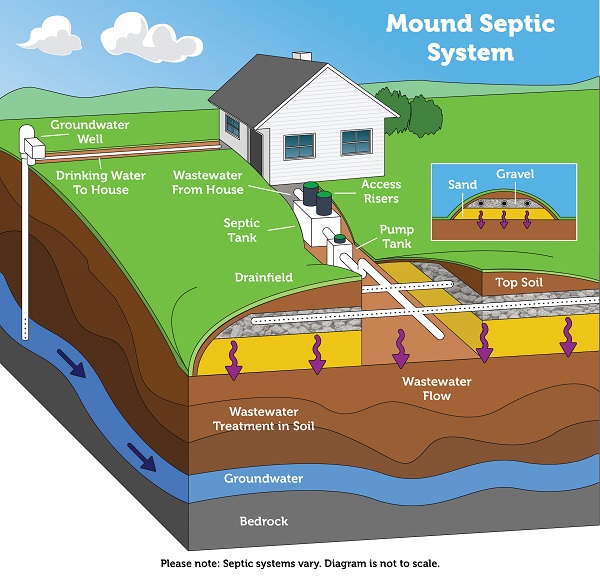Call This Saturday to Get $25 OFF
Clean Solutions, Dirty Jobs – Done Right. Reliable. Responsive. Remarkable.
Call This Saturday to Get $25 OFF
Clean Solutions, Dirty Jobs – Done Right. Reliable. Responsive. Remarkable.
Most homeowners who don’t have access to public sewer systems install septic systems to treat and dispose of wastewater. It’s advisable to onboard a team of experts to assess your property and determine whether your terrain is suitable for septic system installation. Septic Connection has a team of experts who can recommend various solutions for different septic-related problems, such as septic pumping and sand mounds, among others. Although a septic system can run for years without a problem, it’s advisable to schedule regular maintenance with a reputable septic service company that you can trust.

Basics of a Septic System
Unlike modern septic solutions, a traditional septic system relies on gravity when treating wastewater before releasing it into the groundwater. Wastewater that leaves our homes flows into a septic tank, divided into two sections where the breakdown of harmful bacteria starts. Solid waste or sludge sinks to the bottom, and the lighter solid waste or scum floats to the top. The middle part comprises water that is partially cleaned by natural bacteria, referred to as effluent.
The effluent flows into the drain field, which comprises multiple pipes that disperse the water into the ground. As water penetrates deeper into the ground, the bacteria are removed, and clean water is released into the environment.
The septic system is an onsite waste treatment facility, and it is incredibly reliable. However, the system is only as effective…
Imagine flushing your toilet and then suddenly realizing that your backyard has turned into a swampy mess. This unpleasant experience is…
Soil testing is a critical step in various construction and environmental projects. It provides essential information about the ground conditions, which…
Grease traps are remarkable tools that help keep your establishment clean and free from bad odors. Septic Connection has a…
If you have just moved into a new home or property that relies on a septic system for waste and wastewater…
As the leading septic service company at Septic Connection, we believe that septic systems are efficient and effective in disposing of wastewater. However, poor terrain, high levels of groundwater, and shallow bedrock are common issues that affect the installation and maintenance of your septic system. We recommend installing a sand mound along with your septic system to mitigate such problems before further damage.
A sand mound involves constructing sand and gravel to increase the distance between the drain pipes and groundwater or bedrock. A pump is required to get the effluent to the levels of the drain field so that it filters properly into the ground. That’s why it’s important to maintain your sand mound to ensure your septic system is in tiptop condition. If you want to maintain a healthy system, then you need to keep the following in mind:
Balance Water Usage
When there isn’t enough soil to filter contaminants out of the wastewater, it is advisable to balance your water usage throughout the week. This can help you maintain a functioning sand mound since it won’t be overloaded, ensuring that water is properly filtered before it’s released into the groundwater.
Inspections
Scheduling regular inspections with the experts at Septic Connection can help you identify signs of standing water or foul sewage smells that indicate a faulty system. We have an experienced team that can help you detect and repair any issues with your septic tank and sand mound so that it runs smoothly. For more information about sand mounds, contact us at Septic Connection, and enjoy a range of services from septic pumping to sand mound installation at competitive market prices.
Your septic system works hard every single day, quietly managing all the wastewater from your home. Because it’s hidden underground, many homeowners forget it even exists—until something goes wrong. But…
Read moreHomeowners are always looking for ways to keep their septic systems healthy, efficient, and problem-free. With so many products on the market promising to boost bacteria, break down solids, or…
Read more